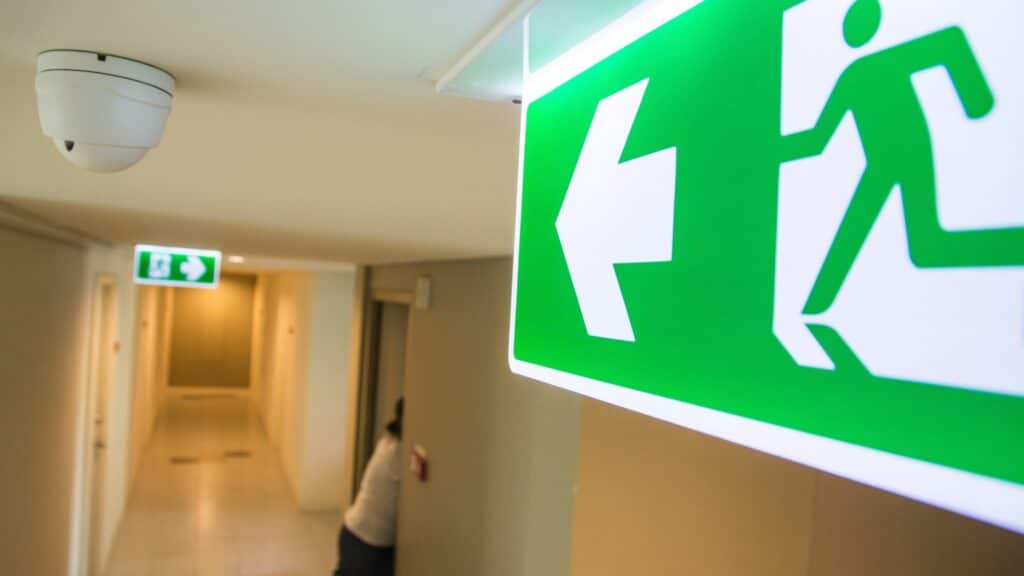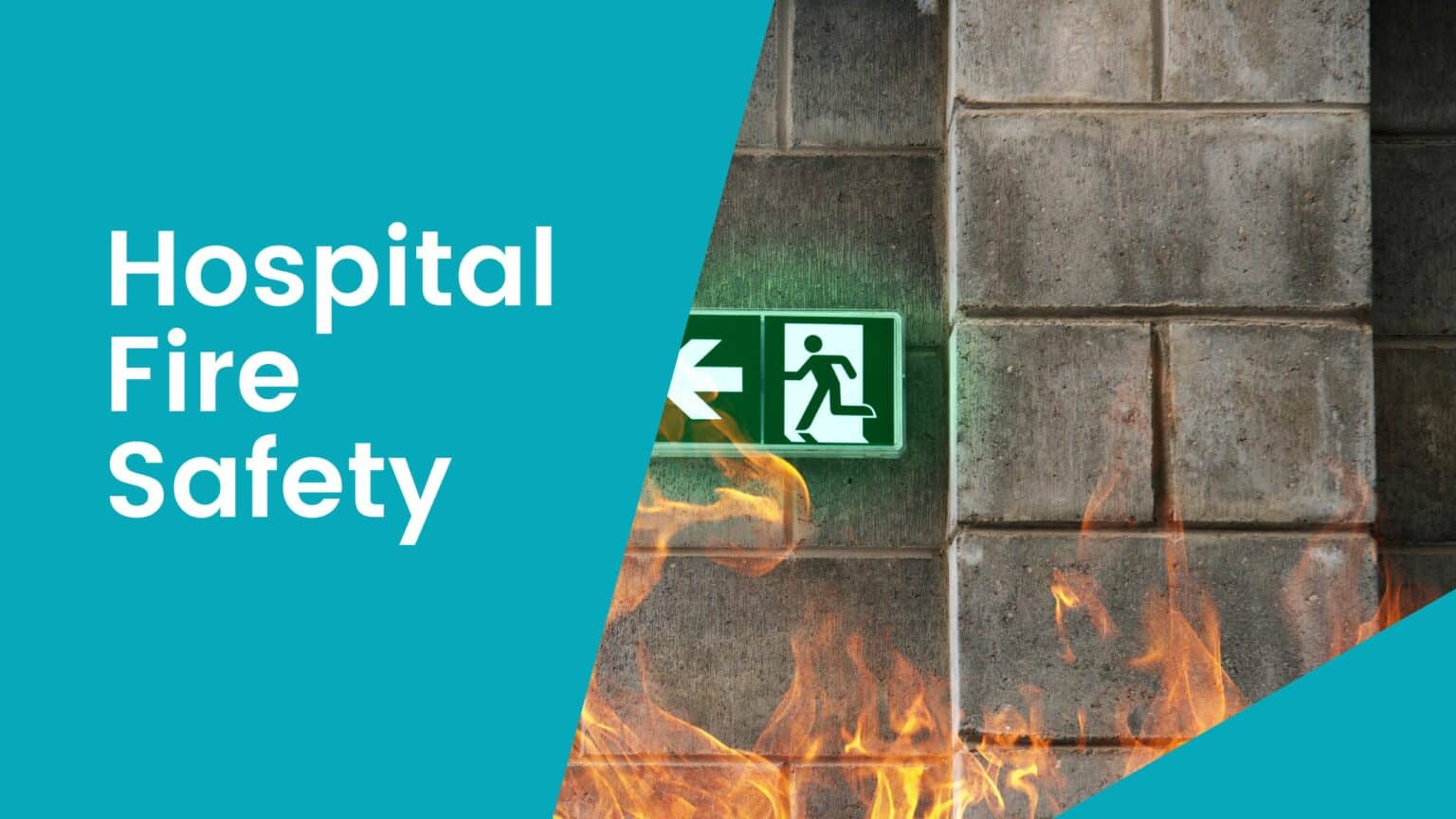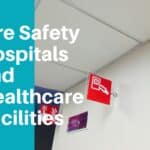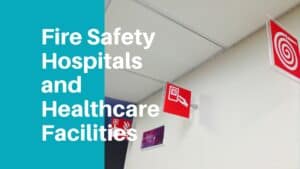Hospitals and other healthcare facilities are particularly vulnerable to occupational safety risks, including fires. Since healthcare workers are vital for the health and wellbeing of the entire population, the creation of a safe work environment through fire safety training for hospital staff
is a critical part of establishing a culture of safety for healthcare workers, patients, and visitors to your facility.
The initial establishment of a safe culture is not enough, however. That culture must be sustainable and include a protocol for ongoing risk mitigation to avoid injuries and loss of life. A hospital fire safety team is responsible for the consistent safety culture required for healthcare facilities.
The Role of a Hospital Fire Safety Team
The hospital fire safety team includes staff and contracted fire safety experts who prioritize the ongoing inspection, maintenance, and training needed for effective fire prevention and response. Leadership within the organization should follow recommendations from this team, from following prevention protocol to regular training sessions that prepare every employee for a possible fire emergency.
The top focus for any hospital fire response team is to identify the three elements that can create fires when combined and make sure they are kept apart. Those three elements are:
- Heat – the source of ignition
- Fuel – combustible or flammable materials (may be solid, liquid, or gas form)
- Oxygen – the same oxygen level required for breathing can also support fire
Certain areas of the hospital may be more likely to combine these elements, raising the risk for fire. For example, bedding is found in abundance in a hospital laundry room, but this combustible material should be kept away from heat sources to prevent ignition. Laboratories and operating theaters are also more likely to house flammable substances alongside heat.
The hospital fire safety team will be responsible for identifying fire risks where these three elements may come together. Safety procedures should include regular inspections, a reporting system for potentially dangerous conditions, and updates to fire safety checklists to make sure that policies remain current.
How to Build an Effective Hospital Fire Safety Team
Your hospital fire safety team may begin with professionals outside your organization who are experts in fire prevention and response. A professional fire risk assessor can help you identify specific risks and guide you in how to mitigate them. Fire safety training for hospital staff from a qualified organization ensures your entire team is equipped to mitigate risk and respond to emergencies that do arise. Hospital Fire Safety Certification for hospital staff is a must for any facility.
Specific staff members may also be appointed to follow specific fire prevention protocols, such as testing smoke detectors and fire extinguishers and inspecting evacuation routes to ensure they remain unobstructed. Processes should be in place to maintain your system of checks and balances frequently.
One of the top responsibilities for the hospital fire response team is to keep the rest of the organization up to date on safety processes. Communication might include information sheets and newsletters to keep staff current, as well as information for new employees as part of their initial training process.
Every healthcare worker should know how to report potential risks when they discover them, and feel empowered to take action when necessary. This safety culture comes from the top down, as facility leaders share the critical importance of fire safety with the entire team.
Fostering a Culture of Safety
Hospital fire safety should be practiced daily to foster a culture where everyone on the team makes it a priority. Facility leadership begins this process, establishing fire safety as a part of the organization’s culture and keeping lines of communication regarding this important topic wide open.
Communication should include more than simply updating staff on procedures and protocols related to fire safety. Staff should also be kept current on fire-related risks and actual incidents. Investigation findings should be transparent and available. Procedures for reporting potential risks by employees should be easy to find and easy to follow.
By opening channels of communication, fire safety becomes a focus and priority from the top of your organization down. Staff should be accountable for knowing and understanding information provided by your hospital fire safety team. Fire safety training for hospital staff should be a regular occurrence, with recognition awarded to those who demonstrate expertise and commitment in this area.
Integrating Fire Safety in Daily Operations
Despite your best efforts within your facility, fires can still happen. Your hospital fire safety team should have a detailed evacuation plan in place that is familiar to everyone on staff. Instructions should also be easy for visitors to find. Regular drills for a variety of emergency scenarios allow staff to practice evacuation plans so they can react quickly and confidently if an emergency does arise.
Evacuation routes should include ways to exit the facility that are clearly marked and always unobstructed. Your facility may also have a phased evacuation plan that includes areas of refuge where staff and patients may wait for assistance from first responders. Your local fire service can advise you on whether a phased evacuation is the best choice for your center and ensure that areas of refuge follow specific engineering criteria to keep evacuees safe until help arrives.
Once evacuations are completed, everyone in the facility needs to be accounted for. This process should be described in detail in your hospital fire safety plan, along with a way to notify first responders about people who are not accounted for as quickly as possible. Like the evacuation drill, accountability drills will ensure anyone who might be trapped during an emergency will receive urgent assistance when needed.

Effective Fire Safety Training for Hospital Staff
Healthcare facilities are among the most vulnerable when it comes to fire risk. A building filled with patients, some who are non-ambulatory, as well as staff and visitors, needs a specific, well-rehearsed plan to deal with any emergency. Establishing a culture of safety is just the beginning. Once in place, training and drills must be offered regularly to ensure everyone in your facility is prepared if the unthinkable occurs.
Get your fire safety certification for hospital staff with SureFire CPR. Our instructors include veteran firefighters who are uniquely equipped to prepare your team for any emergency. Many have even had personal experience with hospital fire risk. We offer online fire safety certification so your entire staff can get the training they need from any location.
Is it time to prioritize fire safety training for your hospital staff? Contact SureFire CPR to get more information about our training courses today.











